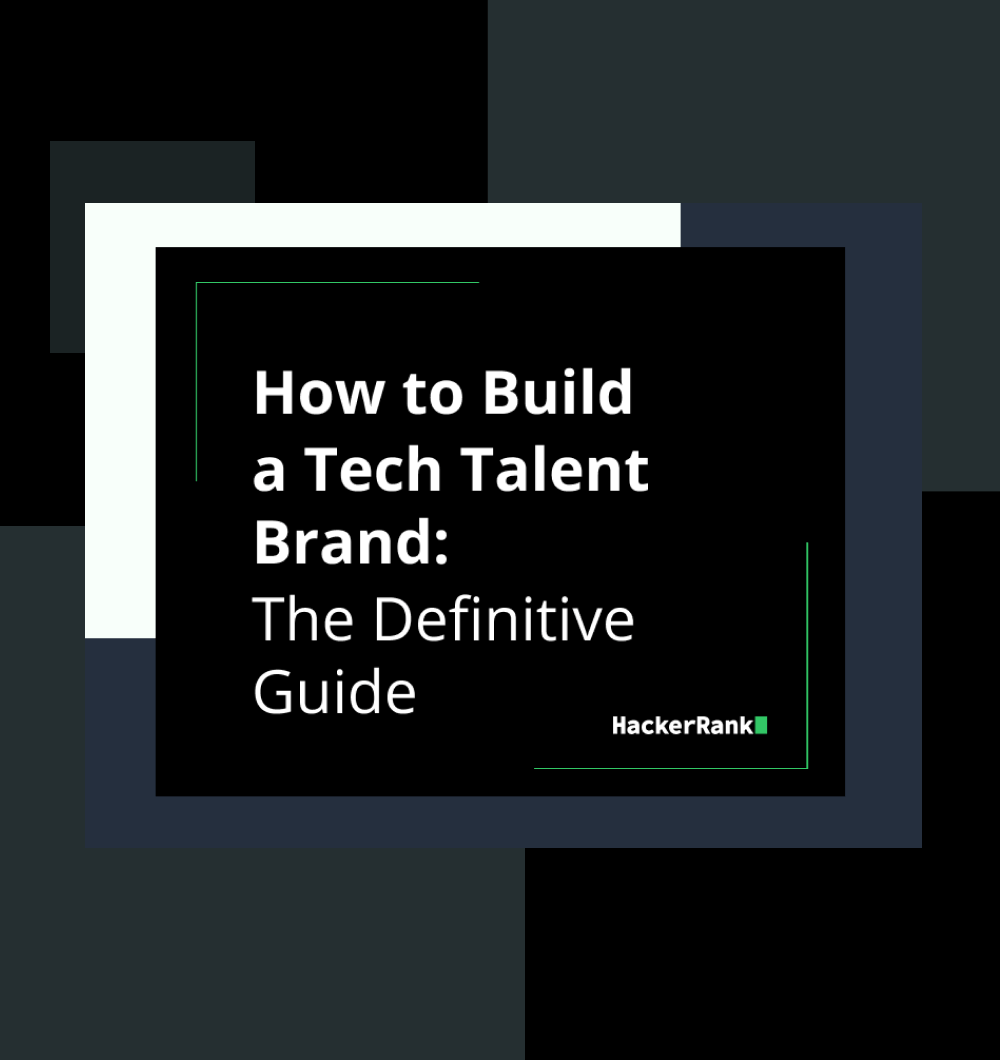
The tech industry is in a state of perpetual evolution, with new tools, technologies, and practices emerging regularly. Yet, surprisingly, many companies’ methodologies for evaluating coding talent haven’t kept pace. While developers are continually honing their skills to adapt to the latest tech, the coding tests and interviews they face during the hiring process often feel outdated, lacking in relevance to the roles they’re applying for.
This disconnect between coding tests and real-world requirements isn’t merely an oversight; it’s a fundamental flaw. It has profound implications for businesses aiming to build powerful tech teams and attract the industry’s top talent. At the same time, it leaves developers yearning for a recruitment process that truly gauges their capabilities — one that mirrors the tasks they’d handle if hired.
But what if technical assessments were more reflective of the daily tasks and challenges developers face? What if these assessments were not just examinations but also indicators of a candidate’s true potential in real-world scenarios?
In this article, we’ll explore why aligning coding tests with real-world environments is not only fairer for candidates but also more indicative of their ability to thrive in their roles. We’ll also break down how to develop a more accurate, relevant, and tech-forward assessment process.
What Is a Real-World Environment?
As the tech industry evolves, the definition of what constitutes a “real-world” environment for developers continually shifts. It’s not just about hammering out lines of code; it encompasses a blend of personal preferences, the tools that developers lean on, the relevance of their tasks, and the technology they use for collaboration. Let’s break down these components.
Flexibility & Personal Preferences
Developers often have deeply ingrained preferences that reflect their unique approaches to problem-solving. Consider the hotly debated choices between tabs and spaces or dark mode and light mode. While they may appear trivial, such preferences are intertwined in a developer’s workflow and can influence their comfort level and productivity. Similarly, the choice of programming languages is less about right or wrong and more about best-fit scenarios and personal affinity.
Recognizing and accommodating these nuances during testing can create an environment where developers can truly showcase their skills, uninhibited by unfamiliar settings.
AI Tools
As artificial intelligence continues to make waves in the tech industry, its integration within the developer’s toolkit has become commonplace. In fact, Stack Overflow’s 2023 Developer Survey found that 70% of developers use or plan to use AI tools in their development process this year. They might employ AI tools for making code suggestions or detecting errors, but the common denominators are accuracy and efficiency. It’s not about taking shortcuts; it’s about harnessing modern solutions to age-old coding challenges. While some companies are just starting to consider how to embrace AI in coding tests, it’s worth recognizing the role AI already plays in developers’ day-to-day work.
Relevant Challenges
The crux of creating a real-world interview environment lies in the questions’ relevance. In their daily roles, developers often lean on a myriad of resources and documentation to craft solutions. They’re not repositories of memorized algorithms or functions, but problem-solvers who know where to find and how to apply information.
Contrast this with traditional coding tests, and there’s a clear discrepancy. Why expect candidates to recall every minute detail when, in practice, they’d have the entire internet as a resource? A genuinely realistic coding test should reflect this paradigm, framing questions that align with day-to-day duties and acknowledging the value of resourcefulness over rote memorization.
Modern Interview Tech & Collaborative IDEs
Coding today isn’t just about writing lines of code; it’s about collaboration, real-time problem-solving, and harnessing the right tools. Modern interview tools have evolved to recognize this, providing collaborative integrated development environments (IDEs) that mirror what developers use in their daily roles. This not only allows candidates to optimally write, test, and debug code, but also facilitate interactions with interviewers or peers in real time.
Observing a candidate in such a collaborative setting provides a dual benefit: you can both understand their coding prowess and get insights into their collaborative and communicative abilities. By adopting such modern tech, companies can simulate an authentic work environment, giving them a clearer picture of how a candidate might fit into their development teams.
Why You Should Assess Candidates in a Real-World Environment
In the quest to find the best tech talent, it’s not enough to merely evaluate a candidate’s knowledge. The true test lies in how they apply this knowledge in real, tangible scenarios. When the assessment environment mirrors the complexities and nuances of actual job roles, you gain insights that can empower skills-based hiring decisions.
Direct Measurement of Job-Related Skills
Assessing candidates in an environment that mirrors their potential workspace offers a direct lens into their ability to handle job-specific tasks. Instead of hypothesizing about a developer’s capability based on abstract tests, you witness their approach, resourcefulness, and adaptability in action — providing a tangible preview of their on-the-job performance.
An Authentic, Bias-Reduced Evaluation
Traditional algorithmic challenges or abstract brain teasers may inadvertently favor candidates with specific training or recent academic exposure. In contrast, real-world assessments level the playing field. By focusing on practical tasks, hiring teams can reduce inherent biases in technical interviews, offering every candidate — whether a fresh grad or a seasoned developer — an equal shot based on merit and applicability of skills.
Attracting and Retaining Top Talent
A recruitment process that resonates with real-world challenges speaks volumes about a company’s commitment to modernity and authenticity. Candidates appreciate interviews that value their practical skills and acknowledge the realities of the tech landscape. This not only increases the chances of attracting top talent but also sets the stage for longer retention, as developers feel their skills and contributions are fairly assessed and genuinely valued.
How To Test Candidates in a Real-World Environment
Implementing a real-world testing strategy can seem daunting, but with the right tools and approach, it can make for a seamless transformation of your recruitment process. Here’s a blueprint to guide you through that shift.
Consider Pair Programming
A collaborative coding session, where a candidate pairs with an existing team member, can yield invaluable insights. It’s not just about assessing coding expertise but also observing interpersonal skills, adaptability, and teamwork — all pivotal in real-world settings.
Emphasize Open-Ended Questions
Instead of seeking one correct answer, pose problems that allow multiple solutions. This provides a window into a candidate’s creativity, their decision-making rationale, and their ability to justify and communicate their choices.
Focus on Problem-Solving
Pose practical challenges that a developer might encounter on a regular workday. It could be optimizing a piece of code, troubleshooting a common bug, or integrating third-party services. Problem-solving questions focus on practical skills over theoretical knowledge.
Incorporate System Design
For more senior roles, understanding how a candidate designs and architects systems is crucial. Pose system design questions that require them to consider scalability, maintainability, and integration with other systems, reflecting the complexities they’d handle if hired.
Use Real Projects
While hypothetical problems have their place, offering candidates a snippet or module from an actual past project can be enlightening. It allows them to grapple with genuine challenges your company has faced, revealing their problem-solving approach and how they might fit into your team’s dynamics.
Create a Feedback Loop
Post-assessment, provide constructive feedback. It serves a dual purpose: you get to observe how candidates receive and act on feedback, and it ensures a positive candidate experience.
By integrating these methods into your recruitment process, you ensure that assessments don’t just test but truly resonate with the demands and challenges of the modern tech world.
Key Takeaways
When companies shift their hiring focus to mirror real-world environments, they’re able to recognize a developer’s true potential. Such an approach showcases a commitment to valuing genuine skills and ensures candidates are evaluated based on their ability to handle authentic job challenges.
Relevance is paramount in this context. By ensuring coding tests genuinely reflect day-to-day tasks, candidates are given the platform to showcase their practical skills and innovative problem-solving capabilities. This emphasis on relevance is complemented by the adoption of modern interview tools, like collaborative IDEs, which simulate actual work settings. Additionally, recognizing the myriad approaches developers bring to their roles, driven by their unique preferences and tools, is essential.
As the tech continues to evolve, it’s imperative for recruitment strategies to keep pace. By rooting our hiring processes in real-world scenarios, we’re not just modernizing — we’re setting the stage for a fairer, more insightful, and genuinely talent-centric recruitment process.
This article was written with the help of AI. Can you tell which parts?

